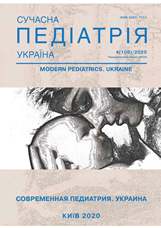Standards of substantive equivalence between accreditation systems for continuous professional development
Keywords:
accreditation, continuous professional development, educational activity, doctorsAbstract
The article highlights the report on the implementation of international standards for accreditation of continuing medical education/continuing professional development (CMO/CPD) of health professionals. The initiator is the International Academy of Accreditation for CPD, and the proposed standards have been developed in collaboration with international organizations dealing with accreditation in various countries.
Purpose — to establish areas and criteria of substantive equivalence for recognition in and between CPD accreditation systems. This recognition is intended to assist international accreditation organizations in developing accreditation requirements for the education of physicians and other categories of health professionals, and in identifying leaders involved in creating new and re-building existing CPD accreditation systems by providing guidance on the key components used in their accreditation systems.
References
Cervero RM, Gaines JK. (2015). The impact of CME on physician performance and patient health outcomes: an updated synthesis of systematic reviews. J Contin Educ Health Prof. 35: 131–138. https://doi.org/10.1002/chp.21290; PMid:26115113
Humprhey-Murto S, Varpio L, Gonsalves C, Wood TJ. (2016). Using consensus group methods such as Delphi and Nominal Group in medical education research. Medical Teacher. 39 (1): 14–19. https://doi.org/10.1080/0142159X.2017.1245856; PMid:27841062.
McMahon GT. (2016). What do I need to learn today? The evolution of CME. N Engl J Med. 374: 1403—1406. https://doi.org/10.1056/NEJMp1515202; PMid:27074064
McMahon GT, Aboulsoud S, Gordon J, McKenna M, Meuser J, Staz M, Campbell CM. (2016). Evolving Alignment in International Continuing Professional Development Accreditation. J Contin Educ Health Prof. 36 (1): 22–26. https://doi.org/10.1097/CEH.0000000000000075; PMid:27584065.
Mansouri M, Lockyer J. (2007). A meta-analysis of continuing medical education effectiveness. J Contin Educ Health Prof. 27: 6—15. https://doi.org/10.1002/chp.88; PMid:17385735
The Federation of State Medical Boards. (2014, March 11). FSMB Maintenance of Licensure (MOL) Task Force on Continuous Professional Development (CPD) Activities. URL: https://www.fsmb.org/Media/Default/PDF/FSMB/Foundation/FSMB_MOL_Task_Force_on_CPD_Activities-FINAL_report.pdf. Accessed April 21, 2016.
Van de Wiel MW, Van den Bossche P, Janssen S et al. (2011). Exploring deliberatepractice in medicine: how do physicians learn in the workplace? Adv Health Sci Educ Theory Pract. 16: 81—95. https://doi.org/10.1007/s10459-010-9246-3; PMid:20848187 PMCid:PMC3074057
Varghese J. (2016). Boost for healthcare medical education. Gulf Times. URL: http://www.gulf-times.com/story/483904/Boost-for-healthcare-medical-education.
Whitehead TD, Lacey–Haun L. (2008). Evolution of accreditation in continuing nursing education in America. J Contin Educ Nurs. 39: 493-499. https://doi.org/10.3928/00220124-20081101-04; PMid:19024406
Downloads
Published
Issue
Section
License
The policy of the Journal “MODERN PEDIATRICS. UKRAINE” is compatible with the vast majority of funders' of open access and self-archiving policies. The journal provides immediate open access route being convinced that everyone – not only scientists - can benefit from research results, and publishes articles exclusively under open access distribution, with a Creative Commons Attribution-Noncommercial 4.0 international license (СС BY-NC).
Authors transfer the copyright to the Journal “MODERN PEDIATRICS. UKRAINE” when the manuscript is accepted for publication. Authors declare that this manuscript has not been published nor is under simultaneous consideration for publication elsewhere. After publication, the articles become freely available on-line to the public.
Readers have the right to use, distribute, and reproduce articles in any medium, provided the articles and the journal are properly cited.
The use of published materials for commercial purposes is strongly prohibited.

